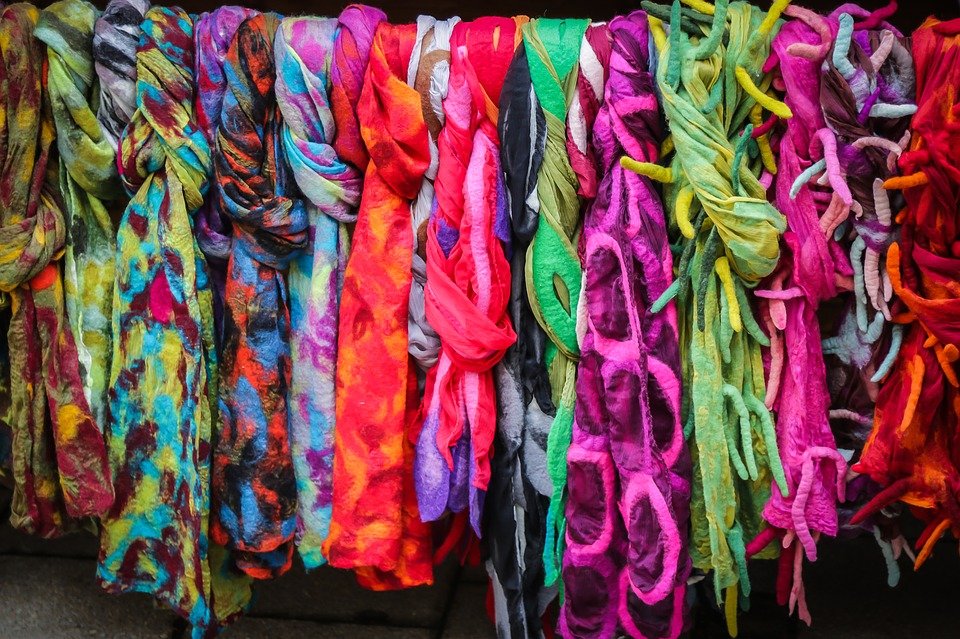Back to: CULTURAL AND CREATIVE ARTS JSS3
Welcome to class!
In today’s class, we will be talking about the introduction to batik. Enjoy the class!
Introduction to Batik

Batik is the technique of using wax on fabric to prevent dye from penetrating the cloth. The word batik originated from the Javanese word ‘tik’ which means ‘to dot’. In Java, Indonesia, Batik is an ancient tradition with the credit to the production of some of the finest Batik fabrics in the world. Historically, Batik is the most expensive and subtle of the resist methods.
Contemporary Batik techniques have been explored remarkably to differentiate it from traditional and formal techniques. Here, artist use vast medium of expressional techniques like etching, discharge dyeing, stencils, different tools for waxing and dyeing, wax recipes with different resist values to decorate fabrics. Batik techniques have been advanced to work with silk, cotton, wool, leather, paper, wood and ceramics.
Materials needed for batik preparation
- Fabrics (cotton material)
- Wax (paraffin wax/beeswax)
- Dye
- Pot
- Paintbrush
- Tjanting
- Foam
- Pencil
- Blade
- Stencil
- Frame
- Rubber gloves
- Nose masks
- Dye bath (plastic bucket/bowl/basin)
- Paper or cardboard
- Heat source
- Mesh
Batik design creation techniques
- Freehand design
- Foam stamp
Batik application of wax
To apply wax on fabric for batik production, you can use a brush to paint the melted hot wax onto the fabric, or use of tjanting to apply the wax or shaped stamp foam. This will create a dye resist medium for achieving desired batik designs. It is of the essence to work fast to prevent the wax from cooling. Do stir the wax frequently as you work to maintain consistency of the wax texture and fluidity.
Batik application of dye
To impact dye to the fabric during Batik production, allow the applied wax to completely cool, unpin the fabric if you stretched it on a frame, and if not, just pick it up in preparation for a dye bath. You may also crumple the fabric to create extra cracks and veins. For Batik, cold water dye is what is used because of the wax. Mix your cold water dye in the dye bath and immerse the fabric for a dye bath following the manufacturer’s instructions on mixture and timing and then bring out to dry.
Batik wax removal technique
- Scrape it off.
- Iron the wax off between sheets of newspaper.
- Boil the wax off.
- Submerge in a basin of hot water.
Batik design and waxing techniques in their order of sequence
- First pre-wash fabric, dry and iron out wrinkles.
- Apply wax on design or pattern is drawn on the fabric using tjanting, paintbrushes or stamp foam.
- Repeat steps 2, 6, 7 and 8 for each new colour you plan to add to the Batik decoration in case of achieving a multi-coloured design.
- Remove wax.
- Melt wax in a can, pot or frying pan at a degree of 220-240f. do not allow this to smoke.
- Rinse and gently hand wash the fabric with cold water and allow to dry.
- Sketch the designs or patterns with a pencil or chalk on fabric as waxing guide.
- Mix up cold water dye as instructed by the manufacturer in a basin.
- Stretch on a frame or loop to keep the fabric flat and horizontal.
- Immerse fabric in the mixed dye for a dye bath.
In our next class, we will be talking about the Art of Embroidery, Knitting and Crocheting. We hope you enjoyed the class.
Should you have any further question, feel free to ask in the comment section below and trust us to respond as soon as possible.

what are the classes of clay
I love this class